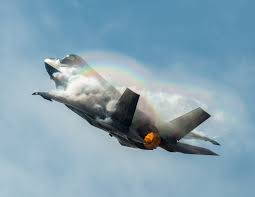
“The truth about the world, he said, is that anything is possible. Had you not seen it all from birth and thereby bled it of its strangeness it would appear to you for what it is, a hat trick in a medicine show, a fevered dream, a trance bepopulate with chimeras having neither analogue nor precedent, an itinerant carnival, a migratory tent-show whose ultimate destination after many a pitch in many a mudded field is unspeakable and calamitous beyond reckoning.”
– Cormac McCarthy, Blood Meridian
Sober observers may find another reason for the Iranian attack against Israel this month in retaliation for the Israeli bombing of the Iranian consulate annex building adjacent to the Iranian embassy in Damascus, Syria on April Fools Day.
May I suggest it is more important in this case to exhaust the kinetic Israeli/US air defense assets and accuracy doesn’t matter as long as exquisite munitions are exhausted; whether shoot/shoot/look or shoot/look/shoot which is a slight permutation on dynamic retasking, controlled pairs or more of air defense munitions are launched as a matter of course to service incoming ordnance. If the object here is to empty the western magazine cupboards by sending your older and less effective munitions aloft (Iran), mission accomplished and you have a very sufficient intelligence mapping of Israeli Anti-Access Air Defense (A2AD) dispositions and tactics, techniques and procedures (TTP) for follow-on responses.
Nations and regions do stumble into war precipitously but there are conflicts in history where the weaker opponents plan and shape the conditions to prevail before the conflict is started; Vietnam is the best example in recent history of reading the tea leaves and setting the stage for success against superior forces.
The west has a manufacturing crisis right now that is existential in restocking and reconstituting the emptying stocks of war materiel. One can either favor or oppose doing that but the fact remains the manufacturing base and capability is an open question for America and its allies.The chaos avalanche of the competency crisis, the reproducibility problems in STEM research & application and the very real infrastructure failures increasing in frequency year by year doesn’t bode well for those wishing to replenish the diminished war stocks potentially reconstituting with stuff that simply doesn’t work.
The second 155mm artillery shell manufacturing plant in the west just went up in flames in the UK in less than a week. One in Scranton Army Ammunition Plant in PA and the BAE Systems Glascoed Plant in Monmouthshire, UK.
In war, there is a lot to be said for how to leverage shaping the conflict left of bang.
I’m fond of saying that many people are in charge but no one is in control.











